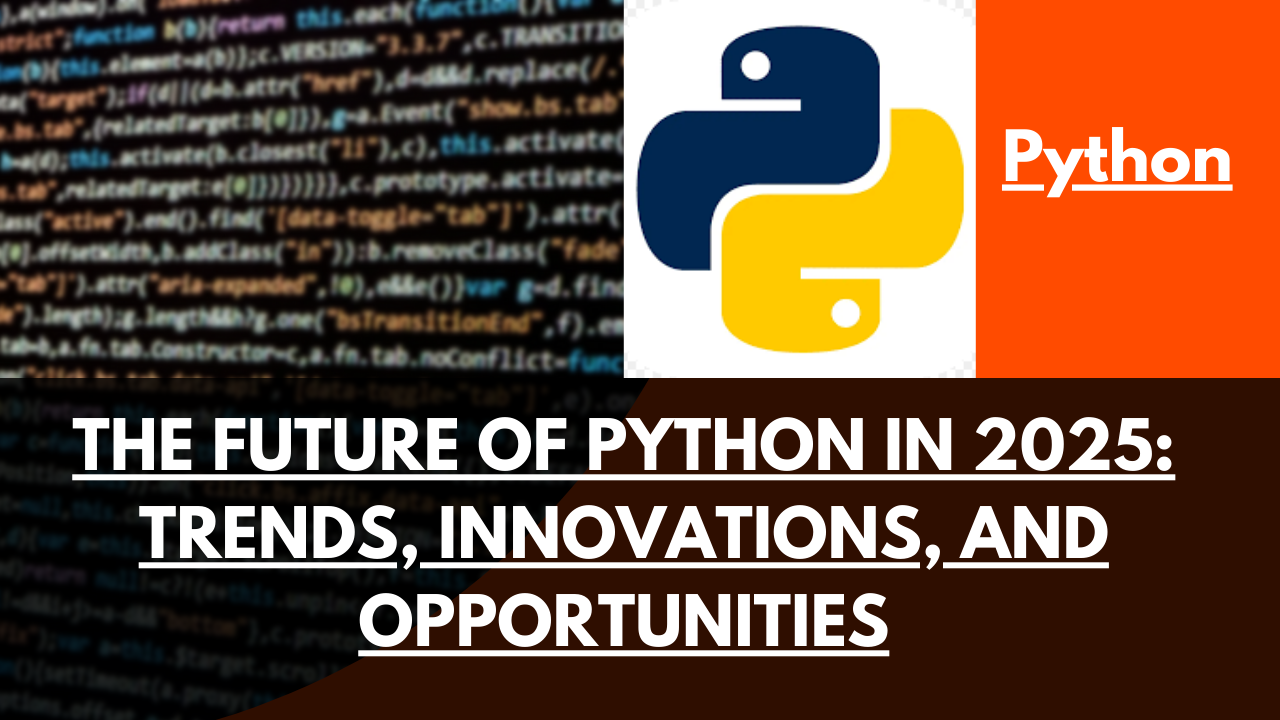The Future of Python in 2025: Trends, Innovations, and Opportunities
Python has solidified its position as one of the most versatile and widely used programming languages in the world. As we move into 2025, the language continues to evolve, expanding its influence across multiple industries. From artificial intelligence to web development, Python’s future looks promising. In this blog, we’ll explore key trends, innovations, and opportunities that will shape Python’s role in the tech industry
1. Python’s Role in AI and Machine Learning
Python has long been the preferred language for artificial intelligence (AI) and machine learning (ML). With frameworks like TensorFlow, PyTorch, and Scikit-learn, Python will remain at the forefront of AI development. In 2025, we can expect even more optimized libraries, enhanced GPU acceleration, and better integrations with cloud AI services. This will make Python an even more powerful tool for AI-driven applications, from healthcare diagnostics to automated decision-making.
2. Growth in Web Development and Backend Technologies
Python frameworks such as Django, Flask, and FastAPI continue to be popular for web development. FastAPI, in particular, is gaining traction for its asynchronous capabilities, making it ideal for high-performance applications. As the demand for scalable and secure web applications grows, Python will continue to be a major player in backend development.
3. Automation and DevOps
Python’s ease of scripting makes it a top choice for DevOps and automation. Tools like Ansible, Fabric, and Selenium are widely used for automating workflows, cloud deployments, and testing. In 2025, as businesses increasingly rely on automation, Python will see greater adoption in CI/CD pipelines and infrastructure-as-code (IaC) solutions.
4. The Expansion of Python in Cybersecurity
Cybersecurity professionals are leveraging Python for penetration testing, malware analysis, and network security. Libraries like Scapy, PyCryptodome, and Requests make Python a valuable tool in security research. As cyber threats evolve, Python’s role in security automation and ethical hacking will expand further.
5. Python in Embedded Systems and IoT
With the rise of IoT (Internet of Things) devices, Python is finding its way into embedded systems through MicroPython and CircuitPython. These lightweight versions of Python allow developers to program microcontrollers efficiently. As smart home technology and industrial IoT solutions advance, Python’s relevance in this space will continue to grow.
6. Performance Enhancements and Scalability
One of the biggest criticisms of Python has been its performance limitations due to the Global Interpreter Lock (GIL). However, ongoing efforts in Just-In-Time (JIT) compilation and alternative runtimes like PyPy are addressing these concerns. In 2025, we may see significant improvements in Python’s execution speed and multi-threading capabilities, making it more competitive with languages like Rust and Go.
7. Python’s Influence in Blockchain and Web3
Blockchain and Web3 development are expanding, and Python is playing a role in smart contract creation, cryptocurrency analysis, and decentralized applications. Frameworks like Web3.py enable developers to interact with Ethereum and other blockchain networks, making Python an important tool in this domain.
8. The Ongoing Popularity of Python in Education
Python remains the go-to language for beginners due to its simple syntax and readability. Universities and online coding bootcamps continue to use Python as the primary language for programming courses. This ensures a steady influx of new developers, keeping Python relevant for years to come.
9. Enterprise Adoption and Cloud Computing
Python’s use in enterprise solutions is growing, especially in cloud computing and big data applications. Companies rely on Python for data analytics, automation, and serverless computing. As cloud platforms like AWS, Google Cloud, and Azure continue to integrate Python-based solutions, the language will see increased adoption in enterprise environments.
Final Thoughts
The future of Python in 2025 looks incredibly bright. Its dominance in AI, web development, automation, and cybersecurity ensures its continued relevance. While performance enhancements and competition from languages like Rust and Go may influence its evolution, Python’s simplicity and robust ecosystem will keep it at the forefront of programming for years to come.
If you’re looking to invest in learning a programming language that offers endless opportunities, Python is undoubtedly a solid choice. Whether you’re a developer, an entrepreneur, or a tech enthusiast, Python’s future is one worth watching!





